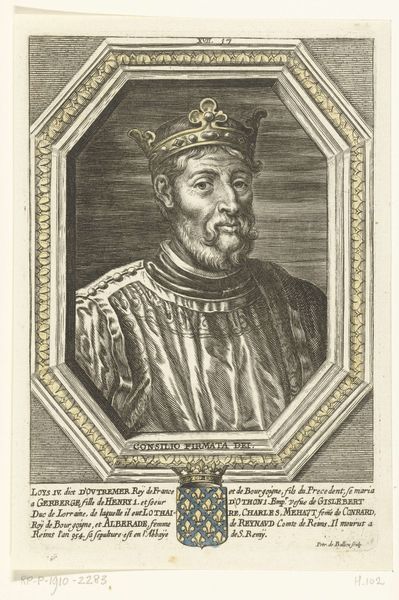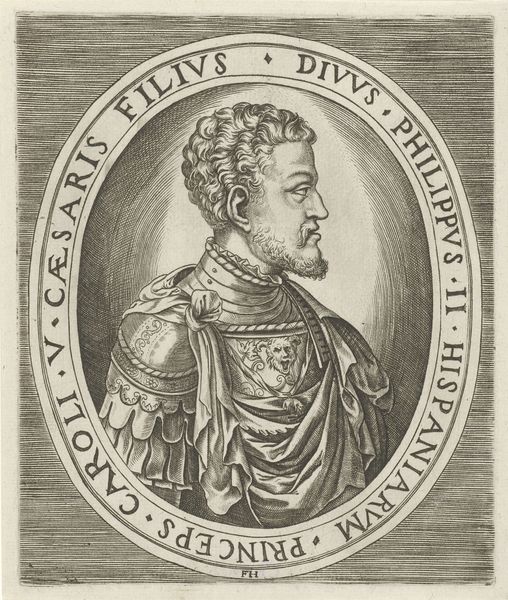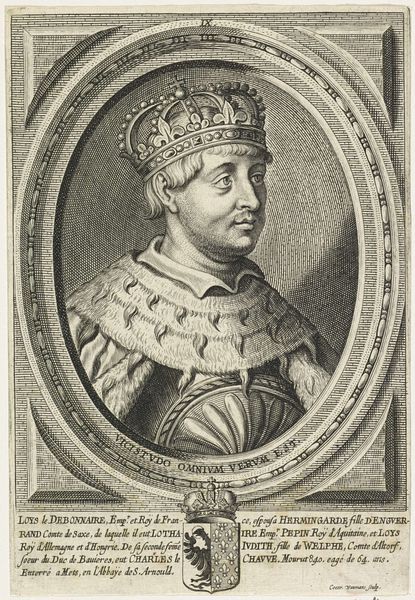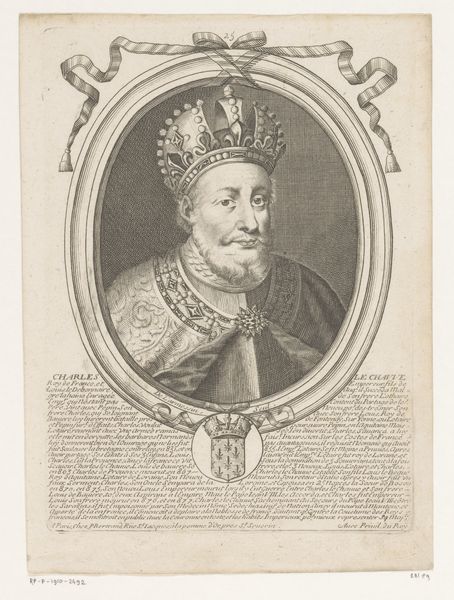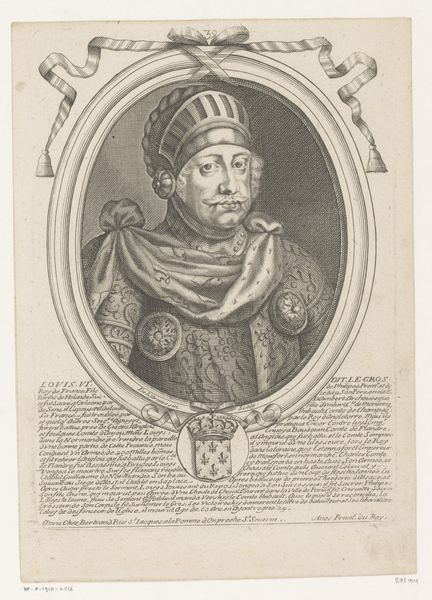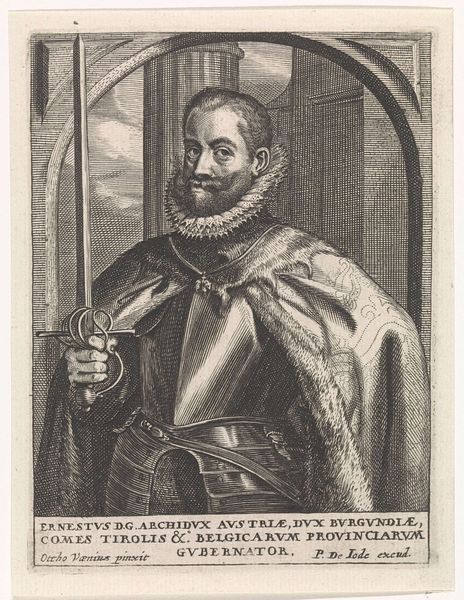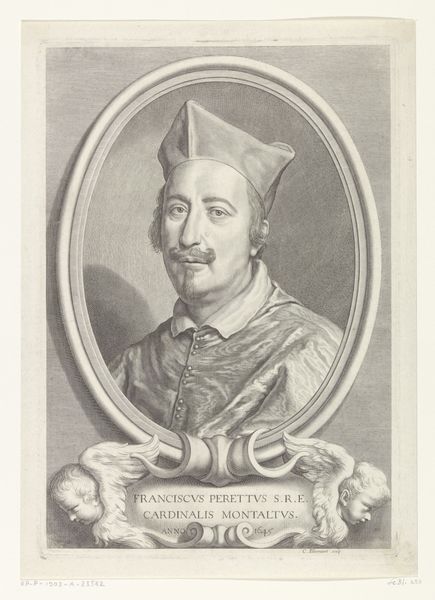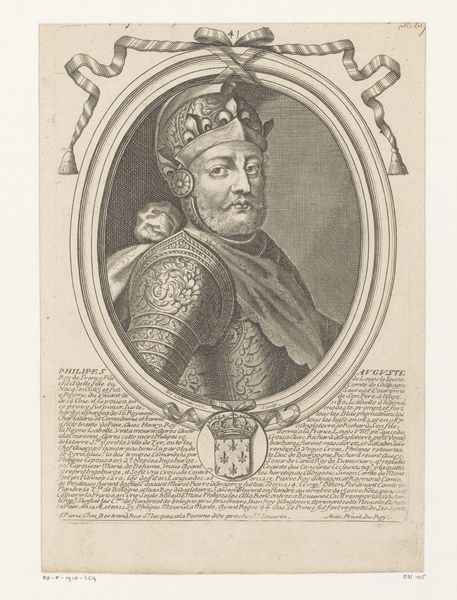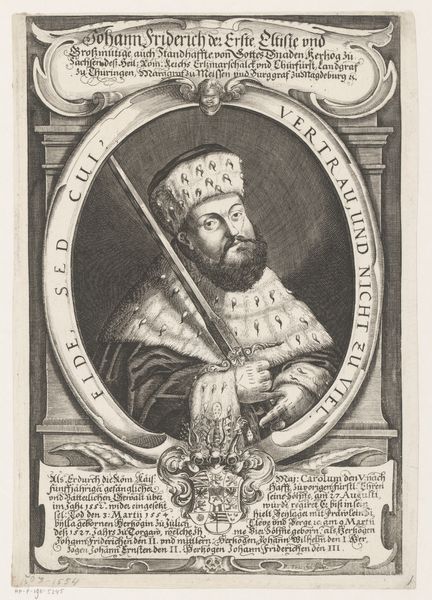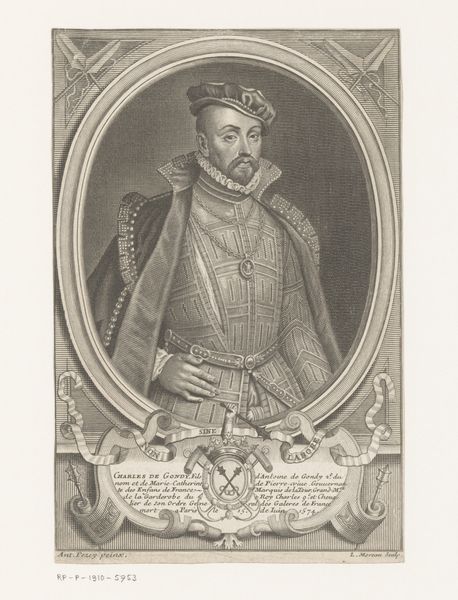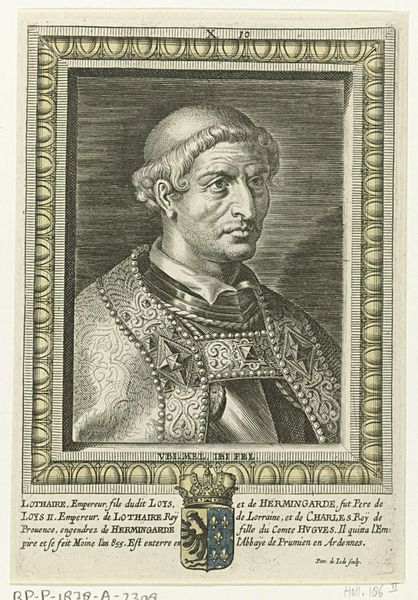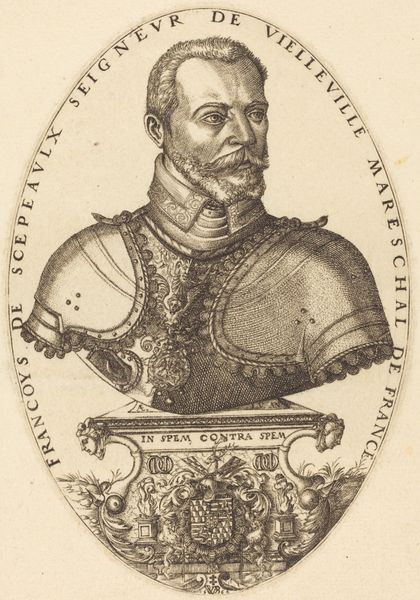
print, engraving
#
portrait
#
baroque
# print
#
old engraving style
#
pencil drawing
#
history-painting
#
engraving
Dimensions: height 162 mm, width 120 mm
Copyright: Rijks Museum: Open Domain
Curator: The level of detail is extraordinary, wouldn't you say? It's almost unsettling. Editor: Quite unsettling. I'm struck by the rigid formality of this print, the texture of the engraving seems almost to suffocate the subject. It's powerful, in a stark and oppressive way. Curator: Indeed. We are looking at "Portret van Filips II van Spanje", or "Portrait of Philip II of Spain," a work rendered between 1638 and 1651 by Pieter de Jode II. The Rijksmuseum holds it within its collection. Note the use of the engraving technique to convey the status of its subject. Editor: He's positioned almost theatrically within that archway, a building in the background; are we meant to understand this is representative of the monarch as a construct, a performance of power? Curator: In a sense, yes. Notice how the textures vary drastically - the ornate detailing of the crown against the relative simplicity in the face. This interplay forces a visual hierarchy emphasizing status through material depiction. The semiotic function of these contrasting elements underscores the visual language inherent within portraiture. Editor: And there's the unavoidable weight of Philip II himself; he was a key figure in the Counter-Reformation, known for his devout Catholicism and, well, his ruthlessness. That historical baggage, so to speak, contributes heavily to the work’s impact now. Seeing it displayed within an institution like the Rijksmuseum raises all sorts of questions about historical memory. How do we confront figures like Philip, what can their presence offer for modern interpretations? Curator: A fruitful analysis, precisely acknowledging art as not a passive display, but as actively participating within socio-political dialogue. Editor: These works, such as de Jode's Philip II, can function as visual provocations prompting crucial discussions about power. It makes one ponder how history remembers its players, and how these portraits contribute to or question their constructed legacies. Curator: I agree. By dissecting their visual language and material choices, we get much deeper insight into both artistic intention and wider cultural and ideological systems in play.
Comments
No comments
Be the first to comment and join the conversation on the ultimate creative platform.

